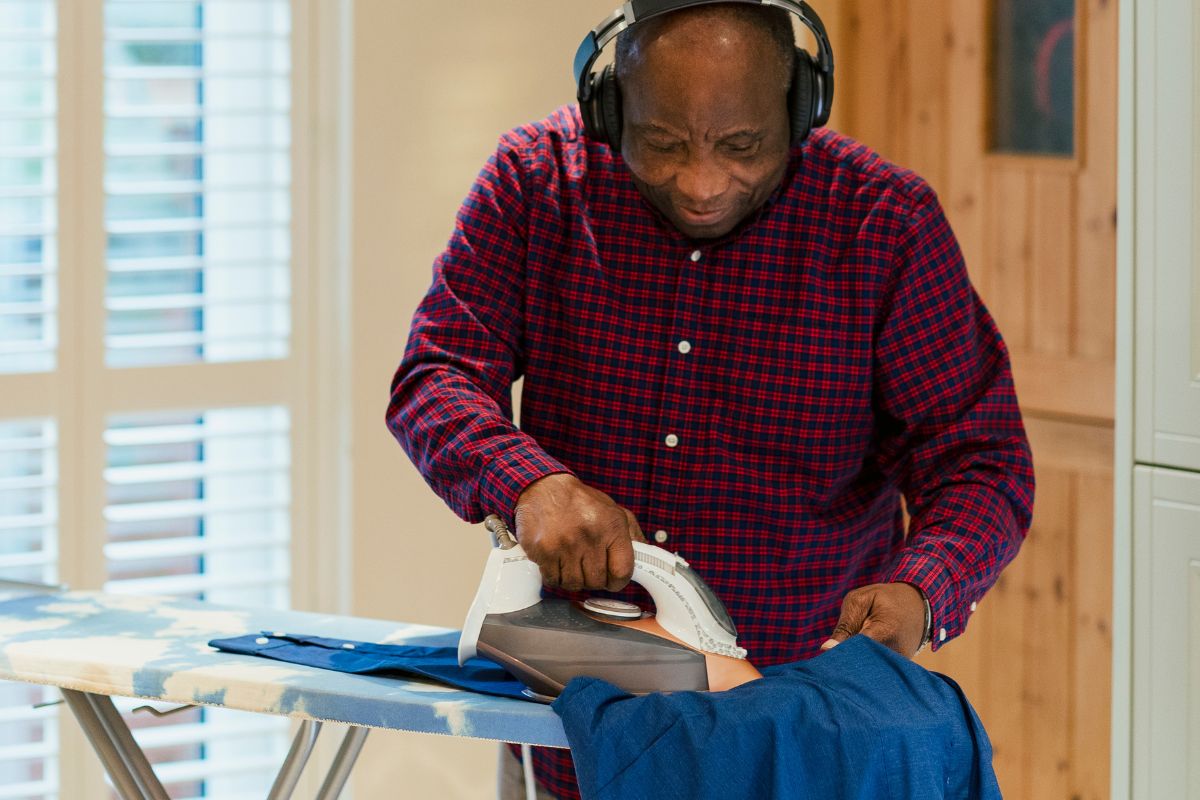A crease in fabric is a common issue encountered in everyday life, whether it’s on clothing, upholstery, or any other fabric-based item. While a crease in fabric might seem like a minor inconvenience, understanding its causes, types, and ways to prevent or treat it can help maintain the appearance and longevity of fabrics. This article explores the formation of creases, different types of creases, and solutions to minimize or eliminate them.
Table of Contents
A Crease in Fabric
A crease is a fold, line, or wrinkle of fabric created whenever the fabric has been bent or compressed. While folds are mainly temporary for fabrics and are more permanent with regards to some specific factors that affect them, this kind of bend occurs typically whenever there is the presence of pressure, heat, or moisture. The tension and bending of the fibers causing them to form a line, which can become more pronounced if the fabric is left in that position for an extended period.
Causes of a Crease in Fabric
Several factors contribute to the formation of a crease in fabric. Some common causes include:
- Pressure: Folding, sitting, or storing items can create deep creases in the fabric. For instance, clothes packed tightly in a drawer or suitcase may develop a crease in the fabric where it has been folded.
- Moisture: On exposure to moisture or water, the flexibility of fabric fiber increases, with which a permanent crease gets easily formed into the fabric material. Once that fabric dries, the existing creases permanently get set when not treated with or pressed before.
- Heat: High heat can change the structure of fibers in a fabric, leading to shifting and bending. Any ironing or drying of garments at high temperatures leads to either temporary or permanent creasing. Cotton is relatively more prone to creasing once exposed to high heat.
- Improper Storage: Improper storage of fabric such as cramming it into small spaces or folding it without much care can cause a crease in the fabric. For instance, wool garments that are stored on narrow hangers can develop unsightly creases along the shoulders.
- Fabric Type: Some types of fabric wrinkle more than others. Natural fibers such as cotton, linen, and wool form creases much more easily because of their flexible molecular properties. Synthetic fabrics like polyester and nylon are less likely to create a wrinkles since they have plastic properties.
Types of Fabric Creases
Fabric creases come in different degrees and types. Some are simple and can easily be removed while others may not be that easy to correct. Here are the common types of creases.
- Wrinkles: Shallow, temporary creases caused by compression or folding. They normally disappear once the fabric is smoothed out or steamed. Wrinkles are common in clothes and can happen due to poor folding or improper wearing.
- Permanent Creases: These are not so easy to iron out, neither with steaming nor pressing. Permanent creases may be a result of the manipulation of fabric in pleats or creases sewn in, or where the fabric is exposed to intense heat or moisture for long periods.
- Tension Creases: These are creases that are created when the fabric is pulled or stretched under tension. For instance, fabric stretched taut on a chair or cushion can form creases that are quite difficult to erase.
- Watermarks: The moisture gets absorbed unevenly and hence makes crease-like marks. The reasons can be the clothes getting improperly dried or exposure to water for too long. At times, when evaporation happens, a permanent line remains there.
- Fading Creases: These are creases that result from the fabric bending or folding repeatedly with time, hence the color fades away in the areas. Fading creases are not usually observable but make the fabric appear old.
How to Prevent Creases in Fabric
Preventing creases in fabric requires proper handling and storage. Here are practical tips to help avoid the formation of a crease in fabric:
- Proper Storage: Hang clothes or store them without unnecessary folding or compressing. Delicate items are best protected with padded hangers and avoided cramming them into drawers or closets. For linens or cotton fabrics, a roll as opposed to folding can prevent the formation of a crease in the fabric.
- Steam or Iron Clothes: Of course, steam or iron clothes usually get rid of wrinkles and creases that are formed after any washing. For delicate fabrics, use low heat settings. For thicker materials, use appropriate settings to maintain the texture and appearance of the fabric.
- Apply fabric softener; this softener can coat fibers, which tend to be brittle and not crease-resistant, and thus help improve their flexibility, which helps decrease the tendency to crease as it’s good for cotton, and linen, which tends to crease a lot.
- Avoid Overloading the Dryer: Overloading the dryer causes clothes to bunch up and wrinkle. Dry clothes in smaller loads so that they can tumble freely, thereby reducing the chances of wrinkles or creases in the fabric.
- Folding Right: When storing clothes, or folding linens, fold them properly to avoid making permanent creases. Use smooth, flat folds, not stacking heavier items on a lighter one; as this can cause pressure on the fabric and result in a crease in fabric.
How to Get Rid of Creases in Fabric
While some creases are unavoidable, several methods can get rid of them and restore the fabric’s nice, smooth appearance:
- Ironing is the most common method of crease removal for fabrics. The care label should always be consulted for the correct heat to use for the particular type of fabric. Steam irons or irons with steam work well for resistant creases in cotton, linen, and wool.
- Steaming is less harsh compared to ironing and can be used on very delicate fabrics, such as silk or polyester. Steam helps to relax the fibers and smoothen wrinkles without having direct contact, reducing the chances of damage.
- Damp Cloth Method: If the fabric is not ironable, then apply a damp cloth. Place the damp cloth on the fabric, and smooth or press the fabric gently. Then, let it air dry to regain its original shape.
- Dry cleaning: Some of the most fragile fibers and those with creases that should never be undone use dry cleaning as the ultimate means. These fabrics require highly experienced and equipment-having professionals in dry cleaners.
- Fabric Relaxers: The fabric relaxer spray is useful to reduce creases and wrinkles on the garment. The chemicals applied to it loosen the fiber; hence the surface can easily be ironed.
Conclusion
A crease in the fabric can happen to anybody; however, there are different knowledge and techniques that can easily be used for their minimization or removal. Thus, a deep understanding of the causes of the crease in the fabric along with the creasing-prone fabric types as well as good treatments or even methods of crease prevention shall enable you to keep your textile goods fresh-looking and well-kept. Whether it is clothing, upholstery, or linens, the care taken to store and treat fabric will help extend its life and keep it looking its best.
















